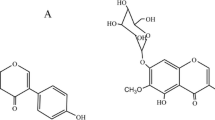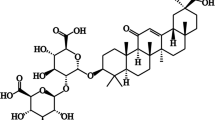Abstract
Synephrine is a natural compound, frequently added to ephedra-free dietary supplements for weight-loss, due to its effects as a nonspecific adrenergic agonist. Though only p-synephrine has been documented in plants, the presence of m-synephrine has also been reported in weight-loss products. The use of synephrine in dietary supplements was accompanied by reports of adverse effects, especially at the cardiovascular level. It is well known that the imbalance in cardiac glutathione levels can increase the risk of cardiomyopathy. The present work aimed to study the role of organic cation-mediated transport of m- and p-synephrine and the possibility that p- and m-synephrine induce intracellular changes in glutathione levels in calcium-tolerant freshly isolated cardiomyocytes from adult rat. After a 3 h incubation with 1 mM p- or m-synephrine, the intracellular content of synephrine was measured by gas chromatography/ion trap-mass spectrometry (GC/IT-MS); cell viability and intracellular glutathione levels were also determined. To evaluate the potential protective effects of antioxidants against the adverse effects elicited by m-synephrine, cells were pre-incubated for 30 min with Tiron (100 μM) or N-acetyl-cysteine (NAC) (1 mM). To assess the influence of α1-adrenoceptors activation in glutathione depletion, a study with prazosin (100 nM) was also performed. The results obtained provide evidence that organic cation transporters OCT3 and OCT1 play a major role in m- and p-synephrine-mediated transport into the cardiomyocytes. The importance of these transporters seems similar for both isomers, although p-synephrine enters more into the cardiomyocytes. Furthermore, only m-synephrine induced intracellular total glutathione (GSHt) and reduced glutathione (GSH) depletion. NAC and Tiron were able to counteract the m-synephrine-induced GSH and GSHt decrease. On the other hand, the incubation with prazosin was not able to change m-synephrine-induced glutathione depletion showing that this effect is independent of α1-adrenoceptor stimulation. In conclusion, both positional isomers require OCT3 and OCT1-mediated transport to enter into the cardiomyocytes; however, the hydroxyl group in the p-position favours the OCT-mediated transport into cardiomyocytes. Furthermore, the structural isomerization of synephrine influences its toxicological profile since only m-synephrine caused GSH depletion.






Similar content being viewed by others
Abbreviations
- CORT:
-
Corticosterone
- DMSO:
-
Dimethyl sulphoxide
- DTNB:
-
5,5-dithio-bis(2-nitrobenzoic acid)
- FDA :
-
Food and Drug Administration
- GC/IT-MS:
-
Gas chromatography/ion trap-mass spectrometry
- GR:
-
Glutathione reductase
- GSH:
-
Reduced glutathione
- GSHt:
-
Total glutathione
- GSSG:
-
Glutathione disulphide
- HClO4 :
-
Perchloric acid
- HEPES:
-
N-(2-hydroxyethyl) piperazine-N-(2-ethanesulphonic acid)
- IS:
-
Internal standard
- LDH:
-
Lactate dehydrogenase
- MRP1:
-
Multidrug resistance protein 1
- NAC:
-
N-acetyl-cysteine
- NADPH:
-
Reduced nicotinamide adenine dinucleotide phosphate
- OCT:
-
Organic cation transporter
- OCTN:
-
Novel organic cation transporter
- PMAT:
-
Plasma membrane monoamine transporter
- QUIN:
-
Quinidine
- ROS:
-
Reactive oxygen species
- SD:
-
Standard deviation
- SPE:
-
Solid-phase extraction
- TFAA:
-
Trifluoroacetic anhydride
- Tiron:
-
4,5-dihydroxy-1,3-benzene disulphonic acid
- β-NADH:
-
Reduced β-nicotinamide adenine dinucleotide
References
Allison DB, Cutter G et al (2005) Exactly wich synephrine alkaloids does Citrus aurantium (Bitter Orange) contain? Int J Obes 29:443–446
Amin J, Xiao L et al (2001) Reactive oxygen species mediate alpha-adrenergic receptor-stimulated hypertroph in adult rat ventricular myocytes. J Mol Cell Cardiol 12:1099–1104
Andrade AS, Schmitt GC et al (2009) Gas chromatographic method for analysis of p-synephrine in Citrus aurantium L. products. Chromatographia 69:S225–S229
Arbo MD, Franco MT et al (2008) Screening for in vivo (anti)estrogenic activity of ephedrine and p-synephrine and their natural sorces Ephedra sinica Stapf. (Ephedraceae) and Citrus aurantium L. (Rutaceae) in rats. Arch Toxicol 83:95–99
Arbo MD, Schmitt GC et al (2009) Subchronic toxicity of Citrus aurantium L. (Rutaceae) extract and p-synephrine in mice. Regul Toxicol Pharmacol 54:114–117
Arbo MD, Larentis ER et al (2008) Concentrations of p-synephrine in fruits and leaves of Citrus species (Rutaceae) and the acute toxicity testing of Citrus aurantium extract and p-synephrine. Food Chem Toxicol 46:2770–2775
Blanck HM, Serdula MK et al (2007) Use of nonprescription dietary supplements for weight loss is common among Americans. J Am Diet Assoc 107(3):441–447
Brown CM, McGrath JC et al (1988) Activities of octopamine and synephrine stereoisomers on alpha-adrenoceptors. Br J Pharmacol 93(2):417–429
Bui LT, Nguyen DT et al (2006) Blood pressure and heart rate effects following a single dose of bitter orange. Ann Pharmacother 40:53–57
Carvalho M, Remião F et al (2004a) The toxicity of N-methyl-[alpha]-methyldopamine to freshly isolated rat hepatocytes is prevented by ascorbic acid and N-acetylcysteine. Toxicology 200(2–3):193–203
Carvalho M, Remião F et al (2004b) Metabolism is required for the expression of ecstasy-induced cardiotoxicity in vitro. Chem Res Toxicol 17:623–632
Cole SPC, Deeley RG (2006) Transport of glutathione and glutathione conjugates by MRP1. Trends Pharmacol Sci 27(8):438–446
Costa VM, Silva R et al (2007) Oxidation process of adrenaline in freshly isolated rat cardiomiocytes: formation of adrenochrome, quinoproteins and GSH adduct. Chem Res Toxicol 20(8):1183–1191
Costa VM, Ferreira ML et al (2009a) Cross-functioning between the extraneuronal monoamine transporter and multidrug resistance protein 1 in the uptake of adrenaline and export of 5-(Glutathion-S-yl)adrenaline in rat cardiomyocytes. Chem Res Toxicol 22:129–135
Costa VM, Silva R et al (2009b) Adrenaline in pro-oxidant conditions elicits intracellular survival pathways in isolated rat cardiomyocytes. Toxicology 257(1–2):70–79
Costa VM, Silva R et al (2009c) Adrenaline and reactive oxygen species elicit proteome and energetic metabolism modifications in freshly isolated rat cardiomyocytes. Toxicology 260:84–96
Engel K, Wang J (2005) Interaction of organic cations with a newly identified plasma membrane monoamine transporter. Mol Pharmacol 68:1397–1407
Engel K, Zhou M et al (2004) Identification and characterization of a novel monoamine transporter in the human brain. J Biol Chem 279:50042–50049
Forman M, Puett D et al (1988) Glutathione redox pathway and reperfusion injury. Effect of N-acetylcisteyne on infarct size and ventricular function. Circulation 78(1):202–213
Fugh-Berman A, Myers A (2004) Citrus aurantium, an ingredient of dietary supplements marketed for weight loss: current status of clinical and basic research. Exp Biol Med 229(8):698–704
Gange CA, Madias C et al (2006) Variant angina associated with bitter orange in a dietary supplement. Mayo Clin Proc 81(4):545–548
Garcia-Carmona F, Cabanes J et al (1987) Kinetic study of synephrine oxidation by mushwoom tyrosinase. Biochem Int 14(6):1003–1013
Ghosh M, Wang HD et al (2002) Tiron exerts effects unrelated to its role as a scavanger os superoxide anion: effects on calcium binding and vascular reponses. Can J Physiol Pharmacol 80:755–760
Greenway F, Jonge-Levitan L et al (2006) Dietary herbal supplements with phenylephrine for weight loss. J Med Food 9(4):572–578
Grube M, Meyer zu Schwabedissen HEU et al (2006) Uptake of cardiovascular drugs into the human heart: expression, regulation, and function of the carnitine transporter OCTN2 (SLC22A5). Circulation 113:1114–1122
Haaz S, Fontaine KR et al (2006) Citrus aurantium and synephrine alkaloids in the treatment of overweigth and obesity: an update. Obes Rev 7:79–88
Halliwell B, Gutteridge JMC (1998) Antioxidant defenses. In: Halliwell B, Gutteridge JMC (eds) Free radicals in biology and medicine. Oxford University, Oxford, pp 105–245
Hayger-Zillgen M, Bruss M et al (2002) Expression and pharmacological profile of the human organic cation transporters hOCT1, hOCT2, and hOCT3. Br J Pharmacol 136:829–836
Hoffman JR, Kang J et al (2006) Thermogenic effect from nutritionally enriched coffee consumption. J Int Soc Sports Nutr 3:35–41
Iwata D, Kato Y et al (2008) Involvement of carnitine/organic cation transporter OCTN2 in distribution of its substrate carnitine to the heart. Drug Metab Pharmacokinet 23(3):207–215
Jordan S, Murty M et al (2004) Products containing bitter orange or synephrine: suspected cardiovascular adverse reactions. Can Med Assoc J 171(8):993–994
Koepsell H (2004) Polyspecific organic cation transporters: their functions and interactions with drugs. Trends Pharmacol Sci 25(7):375–381
Koepsell H, Lips K et al (2007) Polyspecific organic cation transporterrs: structure, function, physiological roles, and biopharmaceutical implications. Pharm Res 24:1227–1251
Kovacic P, Cooksy AL (2005) Unifying mechanism for toxicity and addiction by abused drugs: electron transfer and reactive oxygen species. Med Hypotheses 64:357–366
Lowry OH, Rosebrough NJ et al (1951) Protein measurement with the Folin phenol reagent. J Biol Chem 193:265–272
Martindale (2004) Phenylephrine. The complete drug reference. London, UK, Electronic version
McBride BF, Yang T et al (2009) The organic cation transporter, OCTN1, expressed in the human heart, potentiates antagonism of the HERG potassium channel. J Cardiovasc Pharmacol 54:63–71
Nasir JM, Durning S et al (2004) Exercise-induced syncope associated with QT-prolongation and ephedra-free Xenadrine. Mayo Clin Proc 78(8):1059–1062
Navarro-Sobrino M, Lorita J et al (2010) Catecholamine-induced heart injury in mice: differential effects of isoproterenol and phenylephrine. Histol Histopathol 25(5):589–597
Nykamp DL, Fackih MN et al (2004) Possible association of acute lateral-wall myocardial infarction and bitter orange supplement. Ann Pharmacother 38(5):812–816
Obst O, Rose H et al (1996) Characterization of catecholamine uptake2 in isolated cardiac myocytes. Mol Cell Biochem 163–164:181–183
Ohashi R, Tamai I et al (1999) Na+ dependent carnitine transport by organic cation transporter (OCTNS): its pharmacological and toxicological relevance. J Pharm Exp Ther 291(2):778–784
Oosthuizen MM, Greyling D (1999) Antioxidants suitable for use with chemiluminescence to identify oxyradical species. Redox Rep Commun Free Radic Res 4:277–290
Rang HP, Dale MM et al (2007) Rang and Dale’s pharmacology. Churchill Livingstone, pp. 168–189
Remião F, Carmo H et al (2001a) Copper enhances isoproterenol toxicity in isolated rat cardiomyocytes. Cardiovasc Toxicol 195–204
Remião F, Carmo H et al (2001b) The study of oxidative stress in freshly isolated Ca2+ tolerant cardiomiocytes from the adult rat. Toxicol In Vitro 15:283–287
Remião F, Carvalho M et al (2002) Cu+2 induced isoproterenol oxidation into isoprenochrome in adult rat calcium-tolerant cardiomyocytes. Chem Res Toxicol 15:861–869
Remião F, Rettori D et al (2004) Leucoisoprenochrome-o-semiquinone formation in freshly isolated adult rat cardiomyocytes. Chem Res Toxicol 17:1584–1590
Rossato LG, Pinho PG et al (2010) Development and validation of a GC/IT-MS method for simultaneous quantitation of para and meta-synephrine in biological samples. J Pharm Biomed Anal 52:721–726
Santana J, Sharpless KE et al (2008) Determination of p-synephrine and m-synephrine positional isomers in bitter orange-containing supplements by LC/UV and LC/MS/MS. Food Chem 109:675–682
Sridhar A, Nishijima Y et al (2009) Chronic heart failure and the substrate for atrial fibrillation. Cardiovasc Res 84:227–236
Terzic A, Vogel SM (1991) On the mecanism of the positive inotropic action of the alpha-adrenoceptor agonist, phenylephrine, in isolated rat left aorta. J Pharmacol Exp Ther 257(1):520–529
Thomas GP, Tripathi RM (1986) Effects of alpha-adrenoceptor agonists and antagonists on oubain-induced arrhytmias and cardiac arrest in guinea pig. Br J Pharmacol 89(2):385–388
Thomas JE, Munir JA et al (2009) STEMI in a 24-year-old man after use of a synephrine-containing dietary supplement: a case report and review of the literature. Text Heart Inst J 36(6):586–590
Wu X, George R et al (2000) Structural and functional characteristics and tissue distribution pattern of rat OCTN1, an organic cation transporter, cloned from placenta. Biochem Biophys Acta 1466:315–327
Yamamoto BK, Zhu W (1998) The effects of metamphetamine on the production of free radicals and oxidative stress. J Pharmacol Exp Ther 287:107–114
Zheng MQ, Tang K et al (2010) Role of gama-glutamyl transpeptidase in redox regulation of K+ channel remodeling in postmyocardial infarction rat hearts. Am J Physiol Cell Physiol 297:C253–C262
Acknowledgments
This work received financial support from the Portuguese State through “Fundação para a Ciência e Tecnologia” (FCT) (project PPCDT/SAU-OBS/55849/2004). LGR thanks FCT for her PhD grant (SFRH/BD/63473/2009) and VMC thanks FCT for her Post-PhD grant (SFRH/BPD/63746/2009).
Author information
Authors and Affiliations
Corresponding authors
Rights and permissions
About this article
Cite this article
Rossato, L.G., Costa, V.M., de Pinho, P.G. et al. Structural isomerization of synephrine influences its uptake and ensuing glutathione depletion in rat-isolated cardiomyocytes. Arch Toxicol 85, 929–939 (2011). https://doi.org/10.1007/s00204-010-0630-9
Received:
Accepted:
Published:
Issue Date:
DOI: https://doi.org/10.1007/s00204-010-0630-9




